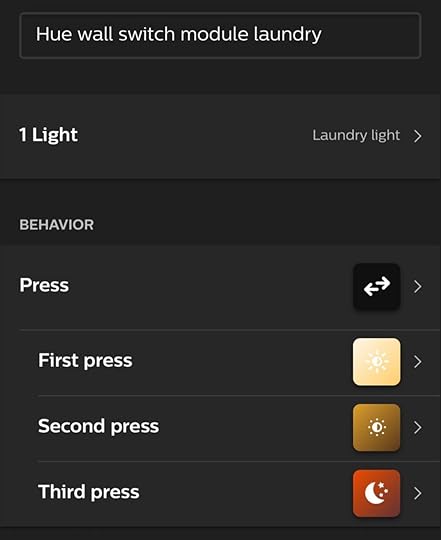Dominique Luchart's Blog, page 617
May 21, 2021
A 20-year-old Xbox Easter egg has been revealed, and there may still be more, Mitchell Clark

 Image: Kotaku
Image: KotakuKotaku has revealed an Easter egg that’s been hidden on the original Xbox for almost twenty years, after a developer who worked on the console sent in a tip. The Easter egg, which has apparently remained secret until now, can show you the Xbox Dashboard Team’s names after you follow a byzantine set of steps (as is par for the course when it comes to some video game secrets).
Kotaku was able to find someone with a working Xbox who could actually carry out those steps, which you can see in the publication’s video below. If you’ve got one of the consoles, you can try it out for yourself by ripping a CD as a soundtrack and calling it “Timmyyyyyyyyyyyyyyyyyyyyyyyyyy!” (using 26 “y”s to reach the maximum amount of characters allowed). After…
The post A 20-year-old Xbox Easter egg has been revealed, and there may still be more, Mitchell Clark appeared first on NEWDAWN Blog.
Tim Cook faces harsh questions about the App Store from judge in Fortnite trial, Adi Robertson

 Tim Cook is seen through a window of the federal courthouse in San Francisco | Photo by Philip Pacheco/Getty Images
Tim Cook is seen through a window of the federal courthouse in San Francisco | Photo by Philip Pacheco/Getty ImagesApple called CEO Tim Cook to conclude three weeks of testimony in Epic v. Apple — and with the end of the trial approaching, Judge Yvonne Gonzalez Rogers engaged Cook in a surprisingly tense exchange over Apple’s business model.
Rogers noted that most of Apple’s App Store revenue comes from games, and she asked Cook why developers can’t use other payment methods to sell in-app purchases, or at least tell users they can make those transactions elsewhere. “If they wanted to go and get a cheaper Battle Pass or V-Bucks, and they don’t know they’ve got that option, what is the problem with Apple giving them that option?” she asked.
“If we allowed people to link out like that, we would in essence give up our total return on our [intellectual…
The post Tim Cook faces harsh questions about the App Store from judge in Fortnite trial, Adi Robertson appeared first on NEWDAWN Blog.
Tim Cook faces harsh questions about the App Store from judge in Fortnite trial,

Apple called CEO Tim Cook to conclude three weeks of testimony in Epic v. Apple — and with the end of the trial approaching, Judge Yvonne Gonzalez Rogers engaged Cook in a surprisingly tense exchange over Apple’s business model.
Rogers noted that most of Apple’s App Store revenue comes from games, and she asked Cook why developers can’t use other payment methods to sell in-app purchases, or at least tell users they can make those transactions elsewhere. “If they wanted to go and get a cheaper Battle Pass or V-Bucks, and they don’t know they’ve got that option, what is the problem with Apple giving them that option?” she asked.
“If we allowed people to link out like that, we would in essence give up our total return on our [intellectual property],” Cook said bluntly. Apple has talked repeatedly about the work it puts into maintaining the App Store and the iOS platform, and it’s accused companies like Epic of wanting a free ride.
Rogers made the opposite case. “The gaming industry seems to be generating a disproportionate amount of money relative to the IP that you are giving them and everybody else. In a sense, it’s almost as if they’re subsidizing everybody else,” she said.
Cook countered that Apple’s many free apps attracted a larger audience than developers could get on their own. “We need a return on our IP. We have 150,000 APIs that we create and maintain, and numerous developer tools, and the customer service piece of dealing with all these transactions,” he said.
But Rogers didn’t sound convinced. She asked why Apple wouldn’t take a cut of something like a banking app transaction: “You don’t charge Wells Fargo, right? Or Bank of America? But you’re charging the gamers to subsidize Wells Fargo.” When Cook said it was because Apple specifically charged for digital goods sales, Rogers noted that Apple itself had defined that rule — saying it was a deliberate choice of business model.
“I understand this notion that somehow Apple’s bringing the customers to the users. But after that first time, after that first interaction, the [developers] are keeping the customer with the games. Apple’s just profiting off that, it seems to me,” Rogers said.
She also said it didn’t sound like Apple’s recent App Store price drops were motivated by competition — just fear of regulation and lawsuits. “The issue with the $1 million Small Business Program, at least from what I’ve seen thus far: that really wasn’t the result of competition. That seemed to be a result of the pressure that you’re feeling from investigations, from lawsuits, not competition,” said Rogers.
Cook replied that after Apple had lowered some commissions to 15 percent, Google did the same, indicating that there was competition, but the judge was dismissive of this argument. “I understand perhaps that [was the issue] when Google changed its price, but your action wasn’t the result of competition,” she said.
The heart of the issue, for Rogers, seems to be a survey that indicates 39 percent of developers were “somewhat” or “very” dissatisfied with Apple’s distribution services. “How is that acceptable, and how is it — assuming those numbers are true — how is it that you’re feeling any motivation and incentive to address their needs?” she asked Cook.
Cook said that sometimes, developers’ and users’ needs conflict — and Cook emphasized in his earlier testimony that Apple puts users first. But he acknowledged that he didn’t regularly get surveys on developer satisfaction.
We won’t know the verdict of Epic v. Apple for weeks or months, and there’s one day of arguments left in court. The exchange with Cook doesn’t necessarily tell us how Rogers will eventually rule, and it certainly doesn’t mean Epic will get some of its bigger demands met. It does suggest, however, that Rogers is seriously considering Epic’s argument that Apple has too much control over one specific part of iOS.
You can find the full exchange between Rogers and Cook below.
Judge Yvonne Gonzalez Rogers: At the beginning of your testimony, you indicated that you wanted to focus on users. I’ve seen evidence that a significant portion of revenue from in-app purchases comes from gamers. Have you seen evidence to that effect?
Apple CEO Tim Cook: I have, your honor.
Rogers: And it’s incredibly significant — compared to all other users, revenue is coming from gamers more than anyone else, am I right in my current understanding?
Cook: The majority of the revenue on the App Store comes from games.
Rogers: And in-app purchases in particular, right?
Cook: Correct.
Rogers: The other thing you said is that you want to give users control.
Cook: Right. For their data.
Rogers: So what is the problem with allowing users to have choice, especially in a gaming context, to have a cheaper option for content?
Cook: I think they have a choice today. They have a choice between many different Android models of smartphone or an iPhone, and that iPhone has a certain set of principles behind it, from safety and security to privacy.
Rogers: But if they wanted to go and get a cheaper Battle Pass or V-Bucks, and they don’t know they’ve got that option, what is the problem with Apple giving them that option? Or at least the information that they can go and have a different option for making purchases?
Cook: If we allowed people to link out like that, we would in essence give up our total return on our IP.
Rogers: But you could also monetize it a different way, couldn’t you? I mean, that is, the gaming industry seems to be generating a disproportionate amount of money relative to the IP that you are giving them and everybody else. In a sense, it’s almost as if they’re subsidizing everybody else.
Cook: The bulk of the apps on the App Store are free, so you’re right that there is some sort of subsidy there. However, the way I look at that, Your Honor, is that by having such a large number of apps that are free on the store, it increases the traffic to the store dramatically, so the benefit somebody gets is a much higher audience to sell to than they would otherwise if there weren’t free apps there.
Rogers: So your logic then is that it’s more of a customer base, not an IP, then?
Cook: It’s both, because we need a return on our IP. We have 150,000 APIs that we create and maintain, and numerous developer tools, and the customer service piece of dealing with all these transactions.
Rogers: But let me ask you, so banking apps. I have multiple banking apps, I haven’t paid for them, but I suspect other than the $99, you don’t charge Wells Fargo, right? Or Bank of America? But you’re charging the gamers to subsidize Wells Fargo.
Cook: In the gamers example, they’re transacting on our platform.
Rogers: People are doing lots of things on your platform.
Cook: But this is a digital transaction with an observable change in currency.
Rogers: It’s just a choice of a model.
Cook: We’ve made a choice. There are clearly other ways to monetize, but we chose this one, because we think this one overall is the best way.
Rogers: Well, it’s quite lucrative. But it seems to be lucrative and focused on purchases that are being made frankly on an impulse basis — that’s a totally different question, about whether that’s a good thing or not, it’s not really right for antitrust law — but it does appear to be disproportionate. I understand this notion that somehow Apple’s bringing the customers to the users. But after that first time, after that first interaction, the [developers] are keeping the customer with the games. Apple’s just profiting off that, it seems to me.
Cook: I view it differently than you do, Your Honor. I view that we are creating the entire amount of commerce on the store, and we’re doing that by focusing on getting the largest audience there. We do that with a lot of free apps, so [even if] we don’t collect a commission from them they bring a lot to the table. And then we have the majority of other people that pay 15 percent, and only the people that are really profiting in a major way are paying 30 percent.
Rogers: Yeah, but the 15 percent, right… you would agree with the basic proposition that competition is good?
Cook: I think competition is great. We have fierce competition.
Rogers: You don’t have competition in those in-app purchases, though.
Cook: Sure, I mean somebody could go if they’re a gamer they could go buy it on the Sony PlayStation or the Microsoft Xbox or the Nintendo Switch.
Rogers: Only if they know, right?
Cook: Yeah, but that’s up to the developer to communicate.
Rogers: And only if they decide to switch in terms of how they do things, right?
Cook: Usually people have both.
Rogers: The issue with the $1 million Small Business Program, at least from what I’ve seen thus far: that really wasn’t the result of competition. That seemed to be a result of the pressure that you’re feeling from investigations, from lawsuits, not competition.
Cook: It was the result of feeling like we should do something from a COVID point of view, and then electing to instead of doing something very temporary, to do something permanent. And of course we had the lawsuits and all the rest of the stuff in the back of our head, but the thing that triggered it was, we were very worried about small business.
Rogers: Okay, but it wasn’t competition.
Cook: It was competition after we did our 15, it was competition that made Google drop theirs to 15 percent.
Rogers: I understand perhaps that when Google changed its price, but your action wasn’t the result of competition.
Cook: It was the result of feeling like we should do something for small business.
Rogers: So when other stores reduced their price, Steam reduced their price, you felt no pressure to reduce your price.
Cook: I’m not familiar with Steam and their financial model. One of the things that’s missed here is that there’s a huge competition for developers. It’s not just competition on the user side, it’s also with the developer side, in addition to the users. You can imagine that if we had an above-market kind of commission, people just wouldn’t develop for us.
Rogers: Let’s talk about developers. I’m seeing evidence in the record that there’s a survey of developers — I’m going to share the results of this bar graph that was presented to me. I don’t know how accurate it is, because I looked for the source document and couldn’t find it. But this survey indicated that 39 percent of developers were either very dissatisfied or somewhat dissatisfied with Apple’s distribution services. 36 percent were somewhat satisfied or very satisfied, and 19 percent didn’t go either way, they’re in the middle. So with 39 percent of all your developers dissatisfied, how is that acceptable and how is it — assuming those numbers are true — how is it that you’re feeling any motivation and incentive to address their needs?
Cook: I’m not familiar with the document you’re referencing, and so it’s hard to comment on certain specifics. But keep in mind that on a weekly basis, we’re rejecting 40 percent [of apps sent for review], so there’s definitely some friction in the system. But this friction is what produces a curated experience for users, that they love and they can go somewhere and be assured that it’s safe and trusted. So sometimes the developer and the user, their interests don’t intersect.
Rogers: But it doesn’t seem to me that you feel under pressure or competition to actually change the manner in which you act to address the concerns of the developers — again, if these numbers are right.
Cook: I would look at it in a different way. We turn the place upside down for developers. Look at a complaint that I might get, and look at the amount of time for a change to be made in the company. It’s amazing, actually.
Rogers: We’ve seen a number of profit and loss statements, and again you see the 100 binders behind me — I don’t recall seeing any other surveys or any other business records showing that you routinely conduct surveys regarding developer satisfaction and that you in fact move or make changes. I take with a grain of salt each side’s anecdotal evidence. What I’m looking for are aggregates. Do you do that?
Cook: I don’t know if we do that. That would be something that Phil [Schiller] would know.
Rogers: You certainly as the CEO then don’t receive regular reports on that.
Cook: That’s correct.
The post Tim Cook faces harsh questions about the App Store from judge in Fortnite trial, appeared first on NEWDAWN Blog.
Curiosity rover on Mars spotted from space as it climbs ‘Mont Mercou’ (video), ,

We now have a bird’s eye view of the Curiosity rover and its latest Martian digs.
NASA’s Mars Reconnaissance Orbiter (MRO) captured a dramatic image last month of Curiosity ascending Mont Mercou, a landform on the slopes of the Red Planet’s 3.4-mile-high (5.5 kilometers) Mount Sharp.
MRO took the picture on April 18 using its High Resolution Imaging Science Experiment (HiRISE) instrument, which can resolve features as small as a coffee table on the Martian surface. So the car-sized Curiosity is plainly visible, even though MRO was flying 167.5 miles (269.4 kilometers) above the rover at the time, according to the HiRISE team’s image description.
Related: Amazing Mars photos by NASA’s Curiosity rover
[image error]
The HiRISE camera aboard NASA’s Mars Reconnaissance Orbiter captured this photo of the Curiosity rover ascending Mont Mercou on April 18, 2021. (Image credit: NASA/JPL-Caltech/UArizona)Curiosity landed inside the 96-mile-wide (154 km) Gale Crater in August 2012, on a mission to determine if the area could ever have supported microbial life. The answer to this question is yes; the six-wheeled robot’s observations have shown that Gale hosted a potentially habitable lake-and-stream system for long stretches in the ancient past.
In September 2014, Curiosity reached the foothills of Mount Sharp, which rises high into the Martian sky from Gale’s center. The rover has been climbing the mountain ever since, examining the layered rock deposits for clues about Mars’ long-ago transition from a relatively warm and wet world to the cold desert planet that it is today.
Observations by MRO and other orbiters show that this transition is recorded in the rock, as a shift from clay-bearing material to layers with lots of salty sulfates. The hills just beyond Mont Mercou are rich in sulfates, “so that is where we’re headed,” Curiosity deputy project scientist Abigail Fraeman, of NASA’s Jet Propulsion Laboratory in Southern California, said in a video update posted on Thursday (May 20).
This is far from the first time that MRO has spied Curiosity. The sharp-eyed HiRISE has picked out the rover multiple times, even snapping an amazing shot of the robot parachuting to the Martian surface during its August 2012 landing.
Curiosity isn’t the only robot currently active on Mars. NASA’s InSight lander has been monitoring the Red Planet’s seismic environment since November 2018, for example, and the agency’s Perseverance rover and tiny Ingenuity helicopter touched down on Feb. 18. Ingenuity is gearing up for its sixth Martian flight, and Perseverance is now beginning to sink its teeth into its own life-hunting, sample-collecting mission, after helping support and document the chopper’s first five aerial forays.
And Mars just got its first Chinese robot — the Zhurong rover, which touched down May 14 on the vast Red Planet plain Utopia Planitia.
Mike Wall is the author of “ Out There ” (Grand Central Publishing, 2018; illustrated by Karl Tate), a book about the search for alien life. Follow him on Twitter @michaeldwall. Follow us on Twitter @Spacedotcom or Facebook.
Join our Space Forums to keep talking space on the latest missions, night sky and more! And if you have a news tip, correction or comment, let us know at: community@space.com.
The post Curiosity rover on Mars spotted from space as it climbs ‘Mont Mercou’ (video), , appeared first on NEWDAWN Blog.
This week on the Space.com forums: A huge giveaway, an AMA and first contact!, ,
In yet another busy week on the Space.com forums, we’ve got a few highlights to catch you up on. The community asks astrophysicist Joe Pesce their most burning questions. We also imagine what it would be like to be an alien. But first, we kick things off this week with our latest giveaway!
Own a piece of Mars![image error]
Own a piece of Mars with this Martian meteorite granule pendant from the Space Store! Enter our giveaway for details. (Image credit: Space Store)Join the conversation
Let us know what you think of SpaceX, science fiction and more in our Space.com Forums here!
Today, we’re launching a special giveaway. To celebrate how prevalent and fascinating Mars has been for space enthusiasts this year, we’re giving away a memorable prize.
Thanks to our partnership with The Space Store, we’re able to offer the community a chance to win a pendant that features granules from the surface of Mars!
[image error]
Score a Perseverance rover Mars 2020 patch in our new giveaway in partnership with the Space Store. (Image credit: Space Store)Found back in 2011 as part of a meteorite that landed in Morocco, these fragments of the Red Planet represent a piece of science history! For more information, including Terms and Conditions as well as how to enter, head on over to this thread.
Best of this week’s AMA with Dr. Joe Pesce[image error]
(Image credit: Joe Pesce)One of the Space community’s favorite people was back on the forums for another AMA. As expected, we were all pretty excited to have Joe back. Here are some of the best questions asked this week:
Hi Joe. Black holes can hold entire galaxies in form and the speed of gravity is roughly as fast as the speed of electromagnetic waves squared. So could gravity, as one of the four forces in our standard model of particle physics be limited to our universe? – JSNardello
Dr. Joe, It’s well known that galactic “dark matter” measurements rest on Newtonian gravity. E.g. galaxy rotation curves are generated based on a Newtonian model of a galaxy spinning in an otherwise empty universe. There have been some grumblings about this lately; Dr. Becky did a podcast on it. It seems almost impossible that these two short-cuts–using Newton’s laws in an empty universe–could account for dark matter. Any comments? – PBWilson
Joe, do you know why it is taking so long to get the James Webb Telescope up into space? I’ve been hearing about it for several years. – Logicagal175
What would you do if you were an alien?More specifically, what would you do if you were an alien and were meeting the human race for the first time? This fascinating question was posed by, fittingly, alien117. Here are some of our favourite responses:
Oops. Wrong number, I have to go. – TheSchnitz
I would smile and say “hello, then goodbye” and exit a.s.a.p. Next question on my way out of Earth’s gravity and missile range, I would ask God, (or what passes for an alien god), “Why me? What have I done to deserve meeting humans”? – sam85geo
“So, is there any intelligent life on this planet? – Pogo
Head over to this thread for the full conversation.
Trending threadsFollow us on Twitter @Spacedotcom or Facebook.
Join our Space Forums to keep talking space on the latest missions, night sky and more! And if you have a news tip, correction or comment, let us know at: community@space.com.
The post This week on the Space.com forums: A huge giveaway, an AMA and first contact!, , appeared first on NEWDAWN Blog.
NASA’s Mars helicopter Ingenuity gears up for 6th flight on Red Planet, ,

NASA’s Mars helicopter Ingenuity will soon take to the Martian skies again.
The Ingenuity team is preparing the little chopper for its sixth Red Planet flight, which is expected to take place in the next week. The coming sortie will be the first for Ingenuity during its extended-mission phase, which focuses on showcasing the potential of rotorcraft to serve as scouts for rovers and human explorers.
“Ingenuity’s flight plan begins with the helicopter ascending to 33 feet (10 meters), then heading southwest for about 492 feet (150 meters),” officials at NASA’s Jet Propulsion Laboratory (JPL) in Southern California, which manages Ingenuity’s mission, wrote in an update Wednesday (May 19).
“When it achieves that distance, the rotorcraft will begin acquiring color imagery of an area of interest as it translates to the south about 50-66 feet (15-20 meters),” they added. “Stereo imagery of the sand ripples and outcrops of bright rocks at the site will help demonstrate the value of an aerial perspective for future missions. After completing its image collection, Ingenuity will fly about 164 feet (50 meters) northeast, where it will touch down at its new base of operations (known as ‘Field C’).”
Video: See the view on Mars from Ingenuity helicopter’s fourth flight
Ingenuity is expected to reach a top speed of 9 mph (15 kph) and stay aloft for 140 seconds, according to the update. Both of those would be new records for the 4-lb. (1.8 kilograms) helicopter, topping the 8 mph (13 kph) and 117 seconds achieved on flight number four.
Ingenuity landed with NASA’s car-sized Perseverance rover on the floor of Mars’ Jezero Crater on Feb. 18. The chopper deployed from Perseverance’s belly six weeks later, kicking off a monthlong flight campaign designed to demonstrate that powered flight is possible on Mars.
Ingenuity did that and more, acing a series of five increasingly complex sorties, the most recent of which occurred on May 7. The solar-powered chopper did so well, and remains in such good health, that NASA granted the mission extension, which comes with a new set of objectives.
Perseverance supported and documented the first five flights, serving as both communications relay station and videographer. But the big rover is now starting to focus on its own science work, which centers on the search for signs of ancient Mars life and the collection of samples for future return to Earth. So it won’t capture any imagery of flight number six, JPL officials wrote in the update.
Mike Wall is the author of “ Out There ” (Grand Central Publishing, 2018; illustrated by Karl Tate), a book about the search for alien life. Follow him on Twitter @michaeldwall. Follow us on Twitter @Spacedotcom or Facebook.
Join our Space Forums to keep talking space on the latest missions, night sky and more! And if you have a news tip, correction or comment, let us know at: community@space.com.
The post NASA’s Mars helicopter Ingenuity gears up for 6th flight on Red Planet, , appeared first on NEWDAWN Blog.
What’s the best student laptop? We asked students, Monica Chin

 The Dell XPS 13 is one of the best laptops for high school and college students. | Photo by Amelia Holowaty Krales / The Verge
The Dell XPS 13 is one of the best laptops for high school and college students. | Photo by Amelia Holowaty Krales / The VergeShopping for a laptop can be stressful — doubly stressful if you or your children will be learning online for the first time. Kids of different ages have a range of different laptop use cases and different needs. And as the choices for best laptop and best Chromebook evolve, so do students’ needs. So I spoke to some experts on the subject: students themselves.
My recommendations here are meant to accommodate a variety of preferences and price ranges. But they’re a jumping-off point rather than an exhaustive list: every student is different. Before making a decision, you’ll want to make sure you read reviews and try out devices yourself if you can. I’ll do my best to keep this article up to date with items that are in stock.
Best laptop…The post What’s the best student laptop? We asked students, Monica Chin appeared first on NEWDAWN Blog.
Philips Hue Wall Switch Module review: smart-ish, at last,
 No more taped light switches.
No more taped light switches.You’ve undoubtedly run across taped light switches like the one pictured above if you’ve ever spent time in Airbnbs. Hell, maybe you have some of these in your own smart home. No judgement, we’ve all been there, which is why I just installed a Philips Hue Wall Switch Module in my own house.
Many smart home fans can trace their obsession back to the very first Hue lightbulbs launched back in 2012 as an Apple Store exclusive. But Hue bulbs, like all smart bulbs, come with a few catches. First, they require a constant source of power to function. That means you’ll lose control over that fancy Hue bulb hanging above your kitchen table just as soon as someone flicks off the light switch. To solve this, many people disable the switch mechanism with tape or a dummy wall plate, only to realize that physical controls are useful when you or your housemates and guests can’t be bothered to yell a command or pull out a phone. So they buy a Hue remote control and tape it to the wall. This comedy of errors is then repeated over and over until they have a house full of mismatched wall switches and legitimate concerns about life priorities.
There’s a small cottage industry of aftermarket solutions for this, including Lutron’s Aurora dimmer that sits on top of a light switch. But Philips has never addressed it directly, until now. The new $39.95 Hue Wall Switch Module solves these issues by making most existing wall switches Hue-smart.
Note that I said Hue-smart, not smart. That’s because the switch you rewire to the Hue Module can only control Hue lightbulbs, not regular inexpensive lights like other smart switches. Nevertheless, it caters to fans of both smart lights and smart switches by offering the benefits of both, so long as they can stomach the cost and ecosystem lock-in.
The Wall Switch Module from Signify-owned Philips Hue is a much simpler device than it first appears. Basically, it’s a buttonless Zigbee remote control for Hue lights. You add buttons by wiring the Hue Module to a standard household light switch. The switch + Hue Module works as a Hue remote control whether tucked inside the wall or not since the Hue Module is powered by a single CR2450 coin battery (included). That allows you to make sure the Hue Module and switch are working properly with your Hue setup before connecting everything back to the wall. It also means that you’ll have to have to disassemble everything at some point in the future to replace the battery, but not for at least five years, according to Philips Hue.
[image error] The battery-powered Hue module can be tested before installing it inside the wall.
The battery-powered Hue module can be tested before installing it inside the wall.I was able to install a Philips Wall Hue Switch Module behind the existing switch in my laundry room in about fifteen minutes. The steps were quite simple, but you’ll need enough empty space in the wiring box behind the switch to accommodate the 4.3 x 1.0 x 3.8 cm (0.51 x 0.39 x 1.5 inch) Hue Switch Module. You should also be comfortable working with household electricity — if not then find someone who is or call an electrician.
 Everything included with the Hue Wall Switch Module. It might look complicated but it’s not.
Everything included with the Hue Wall Switch Module. It might look complicated but it’s not. The Hue Switch Module wired to my wall switch and the old household wires rerouted into the orange wire connector.
The Hue Switch Module wired to my wall switch and the old household wires rerouted into the orange wire connector.Installation is straightforward with the help of videos tutorials supplied by Philips Hue. After shutting off the power at my circuit breaker, I removed the switch assembly from the wall. I then disconnected the two electrical wires connected to my rocker switch and rerouted them into a tiny Hue-supplied wire connector to close the circuit and ensure my lightbulb socket is never without power. I then plugged a Hue-provided wire-pair into the Hue Module and back to the light switch at the same locations where the two household wires were removed.
The Hue Switch Module is added to the Hue app and Hue Bridge (required) like any Hue light or accessory. After assigning the Module to control the Hue bulb in my laundry room, all that was left was to tuck the Hue Switch Module into the wall box and remount the switch.
The Hue Module can be assigned to control multiple Hue lights in a Hue-defined room or zone, or just one Hue bulb in my case. The switch can be set to function as a simple on/off, or to cycle through predefined Hue scenes assigned to one, two, or three presses.
 The Hue app allows button presses to be assigned scenes.
The Hue app allows button presses to be assigned scenes.Scenes didn’t work too well on my rocker switch since a “press” is only registered after both an on / off motion, meaning I’d have to toggle the switch up, down, up, down, up to toggle the scene assigned to the third press. And since my laundry room doesn’t require mood lighting anyway I went with the simple on / off toggle.
The Philips Hue Wall Switch Module solves the issue of someone flipping the light switch and rendering the smart bulb useless. Although it does occasionally miss a beat causing the switch to reverse orientation. Over the weeks I’ve had it installed, I noticed that flipping the switch up turns the light on some days and off on others. That means the module failed to trigger the light somewhere along the way despite it being installed smack in the middle of my relatively small house which is blanketed in a strong Zigbee signal created by ten other Hue lights and plug-in accessories.
To test the failure rate I flipped the switch on and off 100 times with a one-second gap in between. The light failed to respond appropriately five times, translating to a failure rate of 5 percent. It’s not a big deal unless you’re a stickler in such matters. I for one, believe that when a switch is in the up position the light should always be on, just as toilet paper should be unrolled toward the user and bathmats are for drying wet feet. These things are not negotiable in my house.
The Hue app also can’t be configured so that the Wall Switch Module automatically turns off a light after a set time period. That would be ideal for my laundry room, which is really a closet that’s only used a few minutes at a time to load and unload laundry. As such, after a few weeks I ended up adding a motion sensor from Aqara to the room to automatically turn off the light when motion is no longer detected. (You can also stick to the Hue ecosystem and use a more capable $39.99 Hue motion sensor instead.)
Other notables:
The module has two inputs allowing it to control two single switches or one unit with a double rocker.The module also works with push-button switches which have the advantage of making lights dimmable.The module turns the lights on and off smoothly, not suddenly with a flash.So, now I have a $14.99 Hue bulb, $39.95 Hue Wall Switch Module, and $15 motion sensor to replace the 99 cent LED bulb I was using previously. That’s a total cost of $70 to automate a simple task and save a bit of energy all because I failed to teach my kids how to turn off a $1 light bulb.
Was it worth it?
That depends. If you’re like me, and you can afford to be irrationally excited about smart lighting and actually enjoy the hours spent configuring open-source tools like HomeBridge to run on a Raspberry Pi, then yes, it’s worth it. For everyone else it’s a bit complicated.
The Philips Hue Wall Switch Module has the power to unite two opposing camps of home automators who, unsurprisingly, have serious religion when it comes to the primacy of smart bulbs vs. smart switches.
Smart bulb zealots tout the control they have over the color and dimming options of their lights. Hue bulbs, for example, are compatible with Apple’s adaptive lighting feature allowing Hue lights to be automatically adjusted for cooler colors during the day and warmer colors at night. That’s nice, but there’s still that issue with switches killing the power. Smart switch zealots, meanwhile, enjoy an endless selection of inexpensive decorative faceplates and switch types to choose from, along with cheap standard bulbs. But they’re limited to toggling the power or dimming the light, not changing its color or discretely controlling different bulbs on the same circuit.
The Hue Module neatly bridges these two worlds, offering the benefits of both. The downsides are some increased complexity for smart bulb zealots (who often end up buying physical remotes anyway) and increased cost for smart switch zealots. It’s a particularly attractive option for anyone that can afford to be heavily invested in the Philips Hue ecosystem of high-quality feature-rich devices that work across every major smart home platform.
The Hue Module is not for you if you’re looking to make regular cheap light bulbs smart. For that, there are a plethora of alternatives. I have a bunch of Z-Wave switches and dimmers from Duewi installed, for example, but several Zigbee solutions are also available that sit behind your existing switches just like the Hue Module. Aqara, for example, makes inexpensive (and sometimes hard to find) in-wall switch modules (with and without neutral) that make existing switches smart, but are powered from the mains and work with any standard light, unlike the Hue Module. You could even step things up with Lutron‘s excellent switch and dimmer replacements if you can afford them.
If you’re already invested in Hue, or want to be, then the Philips Hue Wall Switch Module does two things well. It neatly solves the issue of unresponsive bulbs connected to wall switches that has long plagued Hue smart lights, while letting you reap the benefits of both smart lights and smart switches. The Philips Hue Wall Switch Module is available now in Europe for EUR39.95 / GBP34.99 and arrives in the US in late June for $39.95.
Photography by Thomas Ricker / The Verge
The post Philips Hue Wall Switch Module review: smart-ish, at last, appeared first on NEWDAWN Blog.
Microsoft Office for Android finally gets a dark mode,

Microsoft is finally adding a dark mode to its Office app for Android. While the Office app has been available on iOS and Android for more than a year, only the iOS version has included built-in dark mode support until now.
“It’s been a highly requested feature by many of our customers,” admits Sourab Nagpal, a product manager at Microsoft. “Many people prefer using Dark Mode as they find it provides a more comfortable visual experience for reading and working on mobile devices.”
The latest Office app for Android will now automatically enable dark mode if you’ve set that as a system preference on your Android device. Dark mode can also be toggled from the home tab in the Office app. Microsoft says it’s rolling out dark mode for Office on Android over the coming weeks, so it might not appear for all users instantly.
Microsoft’s Office app for Android combines Word, Excel, and PowerPoint into a single application. It also includes quick actions like scanning PDFs, or even capturing whiteboards, text, and tables into digital versions. You can download Microsoft’s Office app for Android from the Google Play Store.
The post Microsoft Office for Android finally gets a dark mode, appeared first on NEWDAWN Blog.
Dating apps are encouraging users to get vaccinated with the promise of more matches,

A group of the USA’s biggest dating apps are encouraging users to get vaccinated, just in case the health benefits weren’t reason enough. New features will range from badges for users to show their vaccination status, free premium features for vaccinated users, and links to vaccination resources like the Vaccines.gov website. The apps taking part in the scheme include Match Group’s Tinder, Hinge, Match, OKCupid, BLK, Chispa, and Plenty of Fish services, as well as Bumble and Badoo.
The aim is to encourage users to get vaccinated, with the implied promise of more matches and hence more dates. The announcement cites research from OKCupid suggesting that people who either are, or plan to be, vaccinated get 14 percent more matches. Some apps will even let users filter matches by vaccination status.
 A mockup of Hinge’s vaccination indicator.Image: Hinge
A mockup of Hinge’s vaccination indicator.Image: HingeSpecific features will vary by app. Tinder is giving out free premium features to vaccinated users, adding pro-vaccine profile stickers, and incorporating links to vaccination resources. Bumble and Badoo will offer similar vaccine profile badges, and complimentary premium credits to vaccinated users. Hinge is also giving out normally paid-for features, and is encouraging users to share their vaccination status on their profiles.
What’s unclear at the moment is how the apps plan to verify that users who claim to be vaccinated have actually received a jab. Many of the apps, such as Tinder, already offer verification features, so theoretically they already have systems in place to verify similar information. We’ve reached out to the group for confirmation.
At the time of writing, the vaccine tracker from The New York Times reports that 48 percent of people in the US have received at least one dose of the vaccine, while 38 percent are fully vaccinated. President Biden has set a target of getting 70 percent of adults in the country their first shot by July 4th.
The post Dating apps are encouraging users to get vaccinated with the promise of more matches, appeared first on NEWDAWN Blog.



